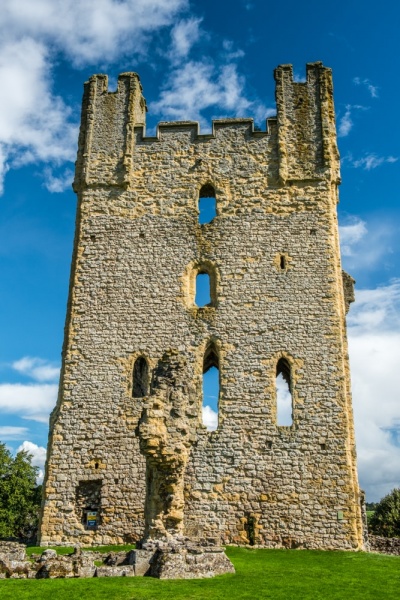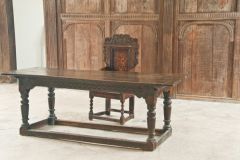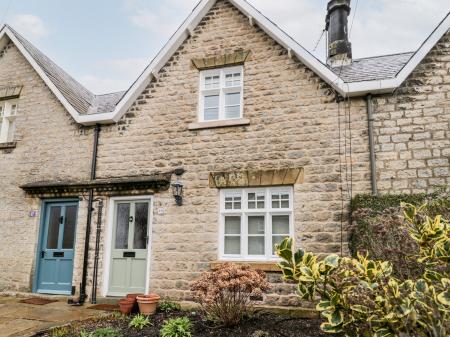
The castle was built sometime after 1120 by Walter Espec, who was also responsible for founding nearby Rievaulx Abbey and Kirkham Priory.
History
There may have been an earlier castle on the site, erected shortly after the Norman invasion of 1066 or during William the Conqueror's ferocious 'Harrying of the North' in 1069. If such an early fortification existed it was not a traditional Norman motte and bailey, but a ringwork fortification, with an earthwork ditch and bank topped by a timber palisade.
We are on firmer historical ground with the 12th-century castle built by Walter Espec. We don't know exactly when the castle was begun; it may have been in the 1120s or 1130s. We know that Espec used it as his base during the anarchy, the long civil war between King Stephen and Queen Maud. Espec was a staunch supporter of King Stephen during the war.

Unlike most Norman castles, there was no motte or central keep. Instead, Espec used a double bailey. These were combined into a single bailey later in the 12th century. The east tower was heightened at that time so that it could serve as a focal point for castle life.
Walter Espec had no children, so on his death the castle passed to his sister Adeline and her husband Peter de Roos.
Espec's castle was rebuilt by Robert de Roos and his descendants, beginning in the 13th century. It is this second phase of building that we can see today in the impressive barbican gates and the unusual D-shaped east tower. The tower may have been heightened specifically for the visit to Helmsley of King Edward III, who stayed here for five days in 1333.
Robert's descendant Thomas de Roos supported the Lancastrian cause in the Wars of the Roses. He was captured and executed following the Battle of Hexham in 1464, and the castle passed to the Crown. In 1478 it was granted to Richard, Duke of Gloucester (later to become King Richard III). Richard owned several castles in northern Yorkshire, including Richmond Castle, Skipton Castle, Middleham Castle, Barnard Castle, and Sheriff Hutton Castle.
It was restored to Edmund de Roos by Henry VII when he took the throne in 1485. Unfortunately, Edmund de Roos died childless in 1508 and the castle passed to his cousin Sir George Manners.

The Tudor Mansion
The grim medieval fortress was remodelled into a comfortable residence by the Manners family during the 16th century. They converted the central block into a suite of rooms featuring ornate plasterwork and panelling, much of which is still in place.
Edward Manners converted the old hall to a residence and converted the 13th-century chapel to a kitchen, connected to the residence by a covered passage. He also transformed the south barbican into a residence.
When Edward's descendent Francis Manners died in 1632 the castle passed to George Villiers, 1st Duke of Buckingham, who was married to Francis' daughter Katherine.

The Civil War Siege
In 1644 the castle was besieged by Parliamentary troops under Sir Thomas Fairfax. The Royalist garrison, headed by Sir Jordan Crosland, held out for three months until they ran out of food and were forced to surrender. Fairfax ordered the castle walls and the east tower to be pulled down so the castle could no longer be used for military purposes. Fairfax did not, however, destroy the Tudor mansion within the castle walls.
Perhaps he had an ulterior motive, for Helmsley Castle was given to Fairfax by Parliament, He, in turn, gave it to the 2nd Duke of Buckingham, whose wife was Fairfax's daughter. When the 2nd Duke died in 1687 Helmsley Castle was sold for £90,000 to Charles Duncombe, a wealthy banker who later served as the Lord Mayor of London.
On his death in 1711 it passed to his sister Mary and her husband Thomas Brown, who promptly changed his name to Duncombe. Rather than live in the decaying Tudor mansion, Thomas Duncombe called in the architect William Wakefield, who had studied under Sir John Vanbrugh, to design a sumptuous stately home overlooking the castle. The castle was left to decay and act as a focal point for views from the elegant new house, known as Duncombe Park.
The castle is still legally owned by the Feversham family of Duncombe Park but is cared for by English Heritage. The Cleveland Way National Trail passes near the site and leads to Rievaulx Abbey, about four miles away.
What to See
Highlights of Helmsley Castle include the impressive dry moat, the south gate and barbican, the partially ruined east tower, and the West Range - the relatively intact Tudor mansion built by the Manners family. The most obvious feature of the east tower is two latrines and their chutes built into the wall.
The West Range
The jewel in the crown of Helmsley Castle, this impressive Tudor residence was built from 1563-1587 by the Manners family. Interior features include large mullioned windows, a sure sign that the mansion was built for luxury, not for defence. The rooms feature beautiful oak panelling, finely detailed plasterwork decoration, and carved stone fireplaces. The highlight is the lord's private apartments, with its wonderful panelling, painted frieze, plasterwork ceiling, and timber overmantel.

Inside the West Range is an exhibition telling the story of life in Helmsley Castle and the dark days of the Civil War siege. See cannonballs used in the siege and a huge unexploded bomb, along with swords, daggers, and arrowheads discovered during excavation.
Immediately beside Helmsley Castle and visible from the top of the earthworks, is Helmsley Walled Garden, a modern garden built on the site of an 18th-century kitchen garden for neighbouring Duncombe Park.
Getting There
Helmsley Castle is on Castlegate, just off the market place in the centre of Helmsley. There is a large pay and display car park (not free English Heritage members). English Heritage members are, however, given free entry to the castle.












 We've 'tagged' this attraction information to help you find related historic attractions and learn more about major time periods mentioned.
We've 'tagged' this attraction information to help you find related historic attractions and learn more about major time periods mentioned.





